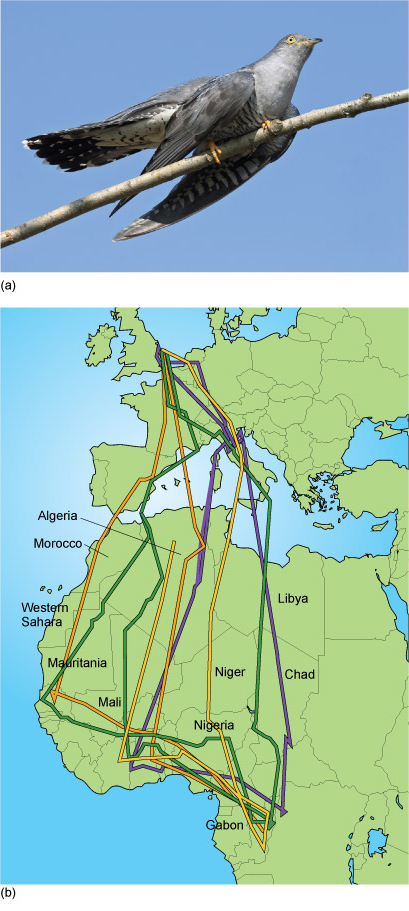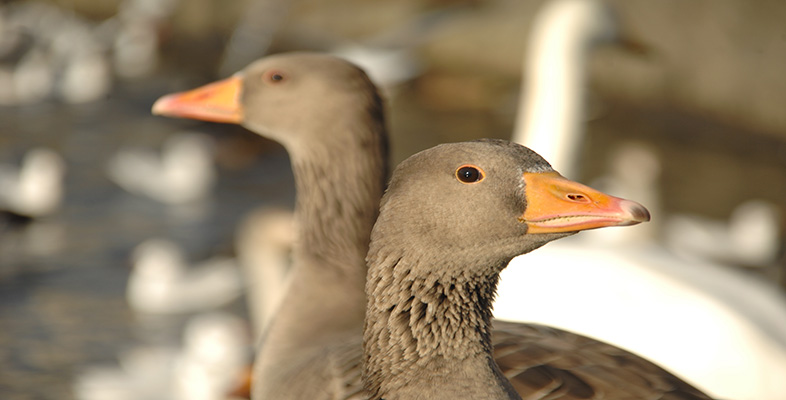2.1 Migration paths and flyways
Birds that migrate are generally categorised as short-distance migrants or long-distance migrants. Short-distance migrants (e.g. waxwings) usually fly overland, within continents: for example, across several states in the USA and Canada or within Europe (Figure 10).

Long-distance migrants, on the other hand, cross continents and their journeys often involve substantial sea crossings (Figure 11).

The division into two categories is really a matter of convenience, since these two categories merge into each other and there is continuum of variation in the distance travelled.
Would you classify white storks (Figure 9) as long- or short-distance migrants?
White storks are long-distance migrants, as they fly mainly from Europe to Africa and hence cross continents.
Long-distance migrants commonly use a migration corridor which is known as a flyway. Flyways are invisible highways or corridors which cross several continents. There are three main global flyways for migrating birds (Figure 12).

Although the small number of flyways suggests strong similarities between the behaviour of migrating bird species, there are actually lots of differences in, for example:
- timing of migration
- stops along the way
- triggers for migration.
This variation has been the subject of many studies on the evolution of migratory behaviour. Before examining some of these studies, it is useful to look at the two main processes that underlie all aspects of evolutionary biology: adaptation and natural selection.
Studies have shown that variation in many aspects of migratory behaviour has a genetic basis and are subject to natural selection, including the urge to migrate, the timing and direction of migration and migratory distance. Changes in migratory behaviour are adaptive. The next section looks at the different ways in which natural selection can result in adaptive evolution of behavioural and/or morphological traits.
